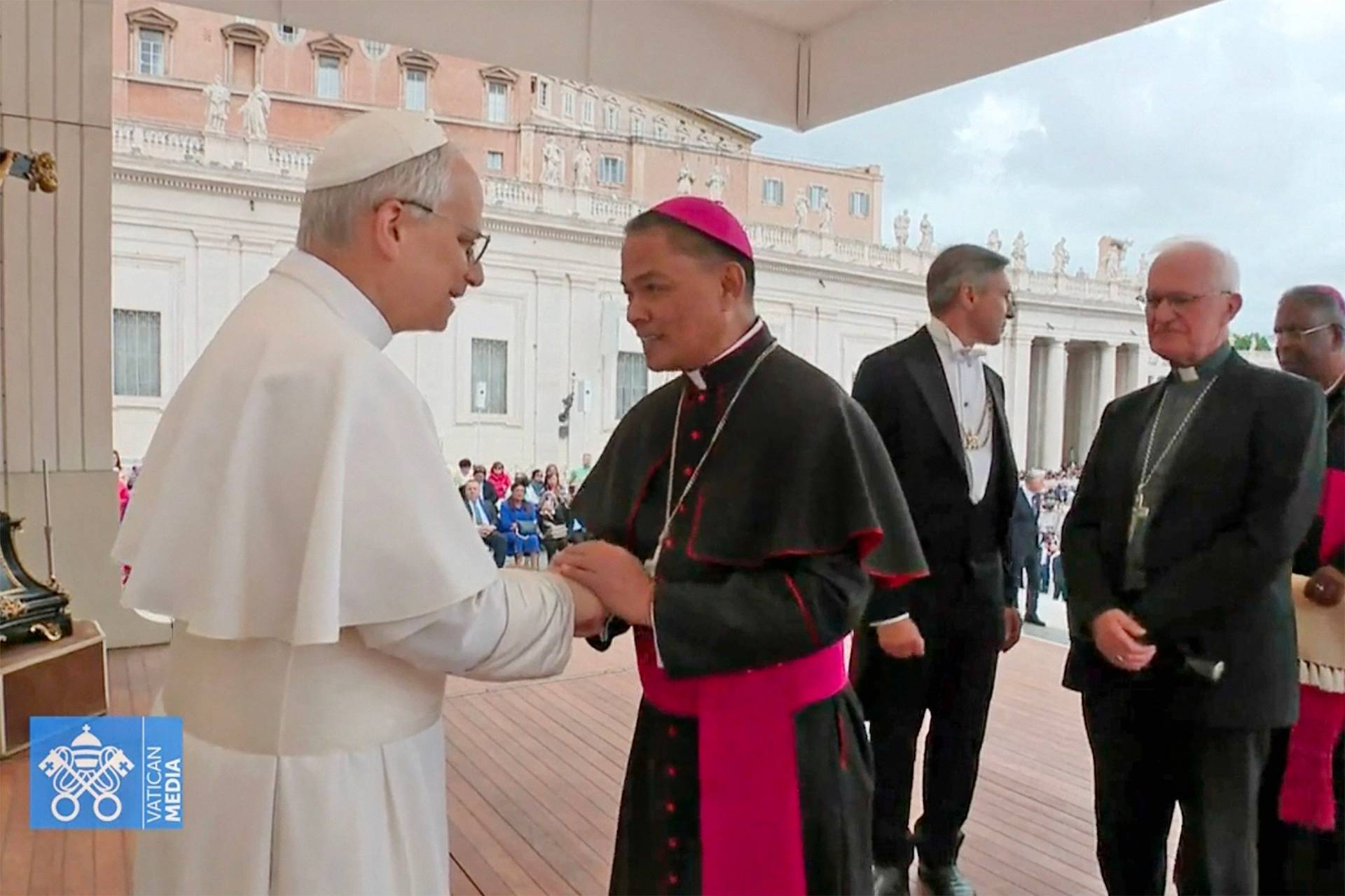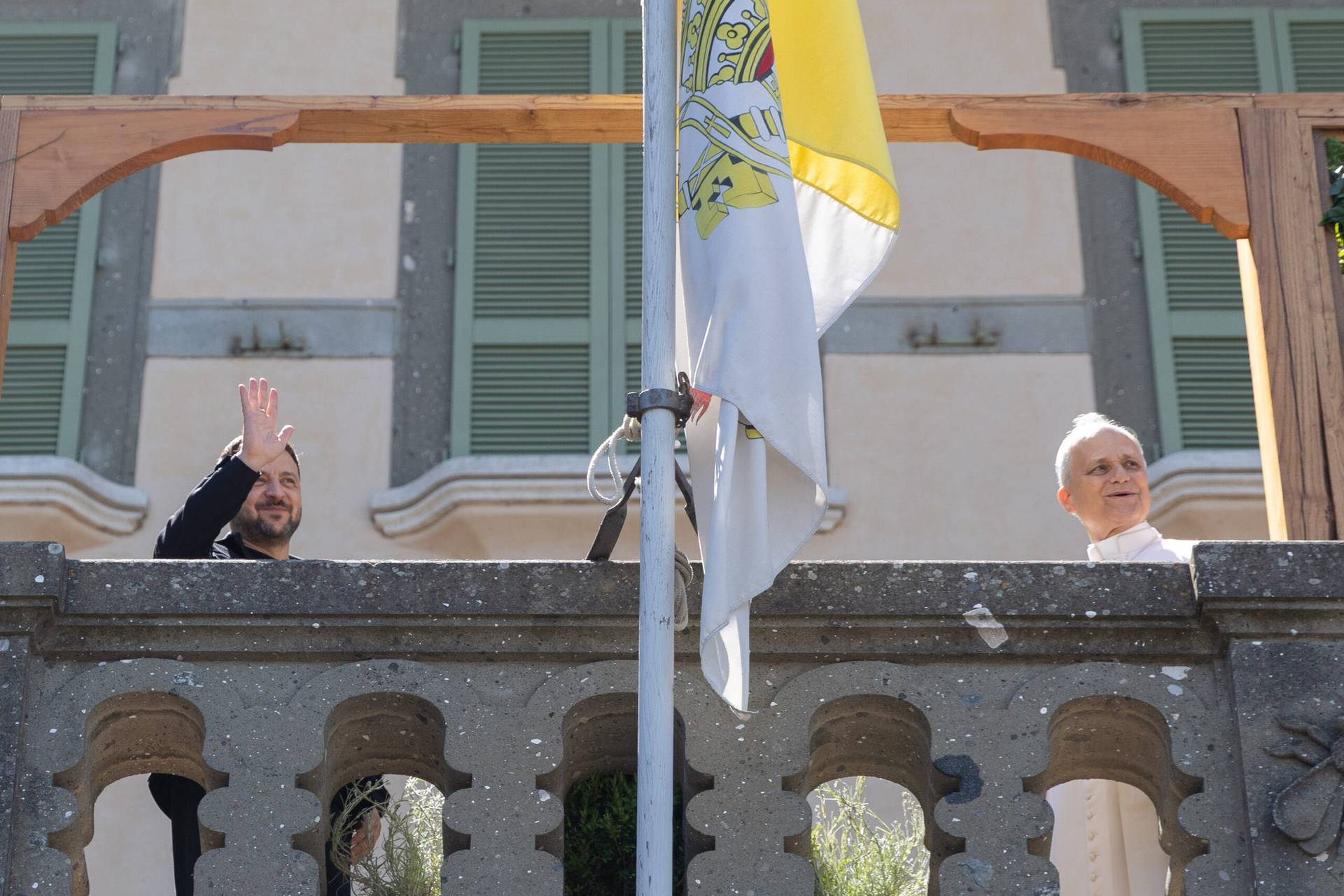Just as an air of mystery surrounds the meaning of Sandro Botticelli’s most famous painting, The Birth of Venus, so too does the life of the Renaissance artist remain enigmatic 500 years after his death.
But now Botticelli has come to America, and the largest and most extensive exhibition of his work ever staged in the United States offers a glimpse into the soul of the artist known for his idealized portrayals of feminine beauty and for his paintings of Christian and mythological scenes.
“Botticelli and the Search for the Divine: Florentine Painting Between the Medici and the Bonfires of the Vanities,” opened at the Muscarelle Museum of Art in Williamsburg, Virginia, and will soon be on display at the Museum of Fine Arts in Boston, and was organized in partnership with Italy’s Associazione Culturale Metamorfosi.
A painting of an isolated, nearly life-sized Venus by Botticelli, one of only two such works known to exist, is a highlight of the show, marking the first time that work has been displayed in the United States. Botticelli’s sixteen paintings in the exhibit include many works depicting Jesus, Mary, and various saints.

John T. Spike, the assistant director and chief curator of the Muscarelle Museum of Art at the College of William and Mary, curated the exhibit and writes in its catalogue that the paintings reflect Botticelli’s “lifelong effort to make visible the invisible beauty of the Divine.”
In an interview at his museum with Crux and the Catholic News Service, Spike explained that the exhibit traces the arc of Botticelli’s artistic and spiritual journey.
The exhibit’s three galleries feature works of art related to Christ’s Incarnation, Passion, and Resurrection, coinciding with Botticelli’s formation as an artist, his mature works in the Medici court in Florence, and his later works after dramatic events roiled that city and apparently had an indelible impact on the artist and his paintings in the years just before and after 1500.
Spike, who taught courses in the fundamentals and history of Christian art for the European University of Rome, is a longtime resident of Florence and an expert on Botticelli, the greatest painter of the Florentine Renaissance in the late 1400s.
This exhibit, he said, offers “a deeply personal look at this artist” and his work. “It describes a spiritual journey, and our show is a spiritual journey,” the art historian added.
Along the exhibit’s central axis are three focal points: the 1466-69 painting Madonna and Child by Fra Filippo Lippi, the master artist under whom the young Botticelli painted; Christ Crucified, a 1488 painting by Botticelli on a shaped wooden cross; and a 1499 altarpiece painting showing a sacred conversation in heaven, Madonna and Child Enthroned with Saints Sebastian, Lawrence, John the Evangelist and Roch.
The Madonna and Child tempera painting by Lippi, a Carmelite friar, shows Mary and baby Jesus in a tender embrace, their faces touching cheek to cheek.

“From his master, he (Botticelli) learns the idea of the intimacy of a mother and child, and the warmth of maternal and filial love,” said Spike.
Lippi’s artwork, marked by naturalism, life-like gestures and ornate, flowing details in clothing, clearly influenced Botticelli’s painting on display, Madonna of the Loggia, which was completed during that same time frame. In that work, Mary and the Christ child are again cheek to cheek, and the baby appears to almost leap into her arms, as their eyes meet.
Nearby in the exhibit is displayed St. Augustine in his Study, a 1480 detached fresco by Botticelli from the Church of San Salvatore in Ognissanti in Florence, which is regarded as the artist’s most important work that was on public display in his lifetime. The nearly life-sized painting shows the saintly scholar in a moment of inspiration, looking upward.
According to the exhibit’s catalogue, that painting shows that the deepest truths are revealed through divine guidance.
Another Madonna and Child painting by Botticelli, this one from around 1480 and popularly known as Madonna of the Book, at first glance might seem to show a familiar scene of a mother reading to her child. But in this painting, the Christ child gazes intently into his mother’s face and seems almost to be guiding her hand along the text of a book.
The ornate golden pattern of Mary’s halo and the luxurious texture of her blue mantle reveal Botticelli’s mastery. But smaller details hint at the painting’s meaning, as baby Jesus holds three tiny golden nails and has a golden crown of thorns wrapped around his lower arm, symbols of his ultimate sacrifice on the cross.
In that intimate interaction between a mother and child, “they are so aware of the reason for which he came into the world,” said Spike.
Botticelli’s painting of Venus on display in the exhibit dates from 1484-90, depicts a beautiful woman modestly covering parts of her naked body with her hand and her flowing hair. The exhibit’s catalogue notes that her sensuous beauty and modest pose demonstrate the dual earthly and divine natures of love.
“He creates our idea of what the Renaissance ideal of beauty was. That’s Botticelli,” said Spike.
That ideal of beauty reflects the divine perfection seen in Botticelli’s painting Christ Crucified, done in the shape of a processional cross. This is not the bloody, beaten tortured image of the crucified Christ seen in paintings of the northern Renaissance and in Mel Gibson’s film, The Passion of the Christ.
Botticelli’s Christ Crucified, in the words of the exhibit’s catalogue, shows “the theological viewpoint of Christ’s unblemished perfection,” and St. Augustine’s belief that “God is beautiful in heaven and on earth… (and) beautiful on the Cross, in the tomb, and in heaven.”
As with the Venus displayed nearby, Christ’s body in that painting is graceful, perfectly proportioned yet elongated, with luminous skin and a gentle countenance. The catalogue also notes that for the artists and philosophers in the Medici court, “a beautiful human body was a glimpse of the indescribable beauty of God.”
But that vision – and the Medici court itself – was about to experience a philosophical earthquake, following the death in 1492 of Lorenzo de’ Medici, remembered in history by his title “Lorenzo the Magnificent.” The death of the powerful leader of Florence and patron of Botticelli left a power vacuum in that city state that was soon filled by the infamous Fra Girolama Savonarola, a fiery Dominican who at the turn of that half-millennium preached against what he regarded as a decadent society.
The charismatic preacher’s message was marked by a fanatical rejection of worldly things, which ultimately stoked the infamous Bonfires of the Vanities in Florence on the days before Ash Wednesday in 1497 and 1498, when frenzied crowds burned towering piles of books, drawings and paintings of nude women, mirrors, jewelry, wigs, and cosmetics in the city’s plaza.
Art experts now believe that works by Botticelli, who was then Florence’s most famous painter of nude figures, were cast into the bonfires, and some have speculated whether the artist himself got caught up in the apocalyptic fervor of those times. Savonarola, who had been excommunicated by the pope, was himself later hung at a scaffold which was set on fire, and his remains were reduced to ashes that were cast into a nearby river.
After those tumultuous times, Botticelli’s artwork changed markedly, as the exhibit demonstrates in its gallery showing his later works, including a painting of the Madonna and Child done with an assistant in 1490, the year that Savonarola began preaching in Florence about the coming Apocalypse. In this painting, Mary’s mantle looks almost like a funeral shroud, and she loosely holds the baby Jesus, who looks away.
Between 1490-94, Botticelli did another painting of Saint Augustine in his Study, but this one is small, and the saint appears downcast as he works at his desk in a cramped space, with crumpled pieces of paper at his feet.
The artist’s 1500 painting of the Adoration of the Magi, done with an assistant, shows a chaotic scene, with a flood of humanity approaching the Holy Family at Bethlehem, as horses are rearing, and some people in the crowd turn away, while others in the unwieldy pilgrimage seem to be pushing and fighting their way forward.

Botticelli’s later works, like his painting of the Madonna and Child enthroned with a group of saints, lack the vivid colors and naturalism of his earlier works, and instead harken to a flatness in depth more typical of medieval or early Renaissance paintings.
“His last work is a renunciation of his previous work,” said Spike. “It’s deliberately un-beautiful, as he renounces colors and details.”
Botticelli’s 1505 painting of the Madonna and Child with the Young Saint John the Baptist shows a sorrowful Blessed Mother handing the Christ Child into the arms of his young cousin, in a composition that foreshadows Christ’s body being lifted from the cross.
Spike believes Botticelli’s work in his last years before the artist died in 1510 demonstrates “a great and profound Christian spiritual reflection.” The artist who gained fame in a worldly court ultimately found artistic and spiritual meaning in simplicity, with artwork centered not on beautiful details but on the meaning of Christ’s sacrifice.
In his search for the divine, the restless genius known for the idealized beauty of his paintings of Venus found meaning in another kind of beauty – Christ’s passion and the redemption it offered for humanity, presented in a simple, direct style that, like his earlier masterworks, endures.
(“Botticelli and the Search for the Divine” is on display at the Muscarelle Museum of Art through April 5, then will be shown at the Museum of Fine Arts in Boston from April 18 to July 9, 2017.)
















